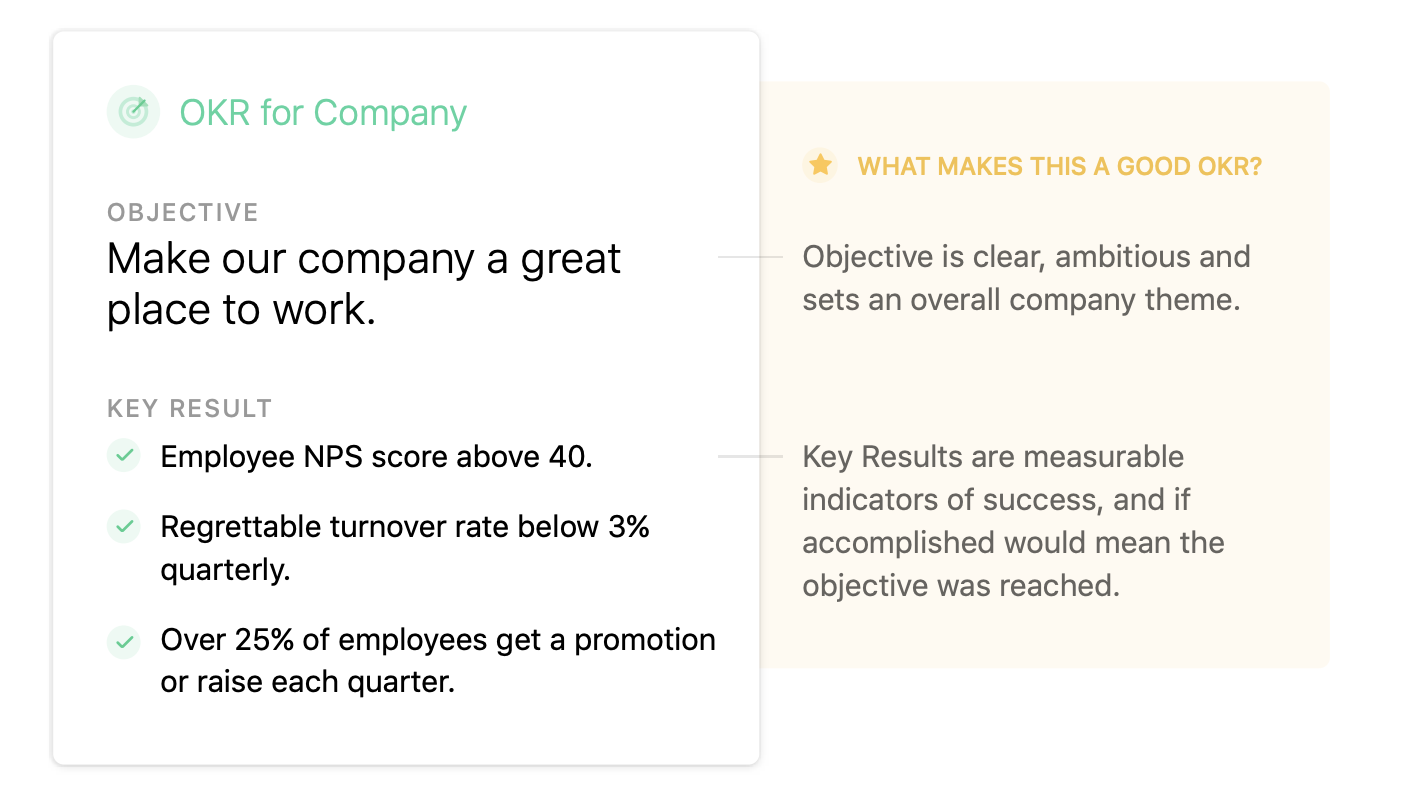British culture is goal-oriented. Yearly, like clockwork, as 31st December rolls over to 1st January and Britons shake off the New Year’s Eve’s daze, countless far-reaching New Year's resolutions are drawn up.
According to YouGov, throughout 2020, only a quarter of British people who made promises for the New Year managed to honour them, whilst a far greater share could not (71% either partially or wholly failed to uphold their goals).
If you find these figures are a bit too familiar, there’s a good chance that you’ve had personal experience with the difficulty that individuals have in setting and maintaining goals without a clear actionable plan.
The objectives of organisations and management teams fare no better in this respect. There’s ample evidence to indicate that ambitious, actionable goal-setting helps to keep employees engaged, teams motivated, and companies productive.
Goal Setting for Success
Companies thrive when they know exactly what they need to achieve and what actions are required to get to that point. This may seem like common sense, easy to do, but goal-setting is a learned art and it takes work and consideration to get it right.
Academics who focus on business management have noticed that simply writing down a target makes a person 42% more likely to achieve it. Scaled up from the individual level, this means that an organisation that has implemented goals from the top to the bottom which can be maintained and adjusted when necessary is far more likely to realise its strategic objectives. Through effective goal setting, employees have a clear idea of what they’re doing from day to day and where the company is going, and this, in turn, improves engagement (which also boosts productivity). Don't just take our word for it; corporations and academics alike stand by goal setting as a cornerstone of effective business management.
However, the importance of goal setting goes beyond improving employee engagement and performance; goal setting is essential for ensuring that your company places fairness and equality at the heart of its operations. Specific and measurable goals facilitate less biased feedback in performance reviews, according to experts at MIT, whilst research demonstrates that organisations without formal goals and performance management processes are more likely to exhibit bias against women and people of colour.
How to Set the Goals Your Company Needs to Thrive: SMART and OKRs
Setting goals involves more than just writing down what you want, as effective as that is. There are concrete proven models that your company can use to align its objectives throughout all levels of the organisation. You should check out how the SMART and OKR models can help you.
Before you even consider what your approach to goal setting might look like, it’s essential to pause and consider what type of goals your company actually needs. It would be prudent to evaluate how organisational structure, size, and growth rate will impact where your company is going, as well as which way the winds are blowing in the wider industry. There is no one-size-fits-all approach to goal setting — all goals must be sustainable and adjustable to the many shifts that can occur over the four quarters of the year.
SMART Goals
A good goal-setting model will allow you to clearly articulate why your company is moving in a particular direction, and how to get there. A great goal setting model will properly contextualise your objectives, taking into account all factors, within and without the company, that might affect the completion of your goals. If you take on board SMART Goals as a model, you will have a crisp method for implementing goals that are measurable and specific.
- Specific: Does the goal have specific means and ends?
- Measurable: Can the goal be measured? How?
- Actionable/Achievable: What are the specific actions that will lead to this goal? What do you need to do to accomplish it?
- Relevant/Realistic: Is this goal relevant to your job duties, team, and company? Is it based on factors that are under your control?
- Time-bound: What is the time period? Does it depend on a deadline or target date, or is it on a regular schedule?
As the below example demonstrates you should be able to pick apart a SMART Goal by the sentence and identify each bit of the acronym:
Regular Goal:
“Get the company to use SMART goals.”
SMART Goal:
"Teach managers how to set SMART goals ahead of next quarters’ performance review cycle. Use software to track goals and help managers and employees own their performance targets. Encourage managers to check in with employees at the end of the quarter."
What you definitely cannot have are goals that are vague; unclear targets can lead to a workforce that lacks directions and is vulnerable to burnout.
OKRs (Objectives and Key Results)
Another important goal-setting model to integrate into your workflow is OKRs, a concise but comprehensive means of setting the company agenda. Introduced by Andy Grove, former President at Intel in his 1983 book, High Output Management, OKRs have become a cornerstone theory across some of the most well-known organisations in the western world, such as Google, Microsoft, and even the British government.
In essence, OKRs are a tool for breaking down goals (hence objectives) and mapping out the road to their attainment (hence, key results). Please see the below diagram to get a sense of how OKRs should work:

As you can see, the model allows your management to be ambitious in their goals whilst ensuring that indicators of success can be measured and progress can be kept. Furthermore, as mentioned earlier, organisational goals should be tailored to the needs of the company, and likewise as the blow demonstrates OKRs should be made to fit the particular objectives of different levels in the organisation:
- Company OKRs are the high-level focus areas for the entire company. These represent the big picture. There should be buy-in and agreement from everyone on these.
- Team OKRs define priorities for the team rather than a collection of individual OKRs.
- Individual OKRs define what each person is working on. Ideally these should be set by individuals, not managers, with the company and team goals in mind.
With a scoring system that quantifies goal-attainment by assigning values 0 through 1 (failure, 0.5 for progress and 1 for achievement, for example), OKRs operate on the understanding that progress towards your objective is what’s important, not necessarily hitting your goal in absolute terms. In fact, achieving your goal outright might be a sign that you weren’t ambitious enough in your goal setting.
For more nuggets of wisdom about how to formulate and implement effective goal-setting models, such as how technology can be leveraged for your goals, please take a look at HR’s Complete Guide to Goal Setting eBook.






